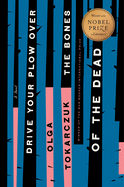
| Publisher: | Riverhead | |
| Genre: | Crime, General, Satire, Literary, Fiction | |
| ISBN: | 9780525541332 | |
| Pub Date: | August 2019 | |
| Price: | $27 |
| Starred | Fiction |
by Olga Tokarczuk, trans. by Antonia Lloyd-Jones
Olga Tokarczuk, winner of the 2018 Booker International Prize for Flights, exhibits more of her trademark strangeness in her newly translated novel, Drive Your Plow over the Bones of the Dead. First published in Poland in 2009, Drive Your Plow over the Bones of the Dead is a literary murder mystery that draws heavily on the cosmology and style of William Blake. The narrator, Mrs. Duszejko, has been written off by most of the residents in her remote Polish village as an "old madwoman." She is earnest, brilliant and utterly bizarre. She calls everyone by strange names, she calculates the horoscope of each person she meets, she spends her days translating Blake and, perhaps most peculiarly, she insists to all of her neighbors that animals have souls. When the bodies of several prominent local hunters turn up, residents are suddenly forced to contend with Mrs. Duszejko's theorizing.
Tokarczuk writes about the world with clarity and wisdom, and she is not afraid to make the world strange for her readers. Her writing allows them to slip seamlessly into the mind of Duszejko, mentally unstable woman turned existential detective, which turns out to be a surprisingly sensible place. Heartwarming and deeply disturbing, Drive Your Plow over the Bones of the Dead is a novel that instills in readers a desire to reorient their relationship to the animal world and perhaps to move into the woods. A rebel and a luminary, Tokarczuk belongs alongside Gombrowicz, Schulz and Szymborska as one of the finest writers in the Polish tradition. --Emma Levy, publishing assistant, Shelf Awareness
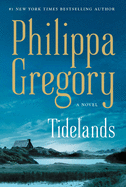
| Publisher: | Atria | |
| Genre: | Family Life, General, Fiction, Historical | |
| ISBN: | 9781501187155 | |
| Pub Date: | August 2019 | |
| Price: | $28 |
| Fiction |
by Philippa Gregory
Novelist Philippa Gregory is best known for her narratives of the English royal court: The Other Boleyn Girl, The Constant Princess and many others. Tidelands is, too, concerned with royal machinations--namely the English Civil War in 1648-49--but it focuses on the lives of ordinary citizens on England's south coast. Alinor Reekie, resident midwife and healer of Sealsea Island, is struggling to support her two teenage children after her abusive husband disappears at sea. When a young priest, who is also a royalist spy, shows up at her cottage, Alinor agrees to aid him, not realizing that his presence will change her life profoundly. Meanwhile, the neighbors' whisperings against Alinor may make it impossible for her to deny accusations--however baseless--of witchcraft.
Gregory draws her characters vividly: Alinor, uneducated but wise and thoughtful, is especially appealing, as is her daughter Alys, fiercely determined to marry the young man she loves. Alinor's brother, Ned, the local ferryman and a passionate veteran of Cromwell's army, gives eloquent voice to the common man willing to fight for a parliamentary government. Most of their neighbors are more concerned with the day-to-day struggle of living and suspicious of anyone who seems to rise too high too fast. Events unfold swiftly, and though Gregory ties up a few plot threads, she leaves others open for a planned sequel. Richly detailed and brimming with secrets (personal and political), Tidelands is a captivating portrait of a brave woman and a compelling start to a new series. --Katie Noah Gibson, blogger at Cakes, Tea and Dreams
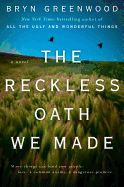
| Publisher: | Putnam | |
| Genre: | Women, Family Life, General, Literary, Fiction | |
| ISBN: | 9780525541844 | |
| Pub Date: | August 2019 | |
| Price: | $26 |
| Fiction |
by Bryn Greenwood
Zee Trego is stressed: she's hobbling around waiting tables on a shattered hip, struggling to pay the bills for herself and her housebound hoarder mother, and caring for her young nephew, Marcus. Things get worse when Marcus's mother, LaReigne, is kidnapped by two inmates at the prison where she volunteers. Zee has no idea how to rescue her sister, but she's hellbent on trying. Bryn Greenwood (All the Ugly and Wonderful Things) weaves Zee's family story together with that of Gentry Frank, Zee's--stalker? acquaintance? not-quite-friend?--in the wry, vivid novel The Reckless Oath We Made.
A high-functioning autistic man who regularly hears (and talks to) multiple voices, Gentry is convinced he is destined to be Zee's champion. Zee isn't sure she can trust Gentry--or anyone. But her situation leaves her little choice. Together, they embark on a winding, perilous journey worthy of any knight and lady: from Gentry's actual castle in the Kansas woods to Zee's uncle's house at the very back of nowhere, before they set out on their rescue mission.
Greenwood renders her oddball cast of characters with insight and compassion: nearly every major member of the ensemble gets a chapter of his or her own, though Zee's dry, jaded, often snarky narrative voice carries the book. The story draws together themes of desperate poverty, the complicated bonds of family, mental illness and unlikely (but no less deep) love. Like Zee herself, Greenwood's fourth novel is sharp, unexpected and undeniably powerful. --Katie Noah Gibson, blogger at Cakes, Tea and Dreams
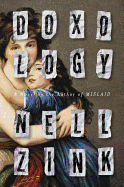
| Publisher: | Ecco | |
| Genre: | Family Life, General, Literary, Political, Fiction | |
| ISBN: | 9780062877789 | |
| Pub Date: | August 2019 | |
| Price: | $27.99 |
| Fiction |
by Nell Zink
Wrapped in the cloak of a social novel that spans three decades of American life beginning in the 1980s, Nell Zink's Doxology is a tender story about what it means to be a good person and a good parent in trying times.
Daniel and Pam Svoboda establish their first marital abode in 1991 in an illegal one-room apartment above a video store on the Lower East Side, where they're joined by a daughter, Flora, the following year. Pam has been living in New York City and working as a computer programmer since fleeing the strict discipline of her parents' home and dropping out of high school at age 17. Daniel's an "eighties hipster" who barely moves a rung up the economic ladder--from law firm proofreader to long-term temporary office assistant--over the novel's span.
Through the lives of the Svobodas, readers experience the terror attacks of 9/11, the Great Recession and the election of Donald Trump, an event that brings into conflict the romantic relationships of Flora, a campaign staffer for the Green Party. This forces her to make a fateful personal choice that will determine her role in nurturing the family's next generation. Zink (Mislaid) is a sharp observer of current events, whose digressions on subjects that include New York real estate, startups and both the beauty of idealism and its limits are highlights of the novel.
Doxology circles around a coterie of gentle, likable characters who seem to find the task of navigating their tangled personal lives as difficult as confronting the challenges of an increasingly complicated world. --Harvey Freedenberg, freelance reviewer
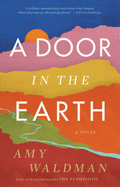
| Publisher: | Little, Brown | |
| Genre: | Women, Cultural Heritage, Literary, Political, Fiction | |
| ISBN: | 9780316451574 | |
| Pub Date: | August 2019 | |
| Price: | $28 |
| Fiction |
by Amy Waldman
A Door in the Earth by Amy Waldman (The Submission) follows Parveen, an idealistic Afghan American anthropology student who travels to a tiny village in Afghanistan to conduct research and help out at a clinic set up by a charismatic American philanthropist named Gideon Crane. Parveen is one of many Americans who receives Gideon Crane's message with enthusiasm bordering on religious zeal. Through Crane's book Mother Afghanistan, Parveen feels connected to her country of birth in a way that has often proved elusive.
Because the story takes place in 2008, readers benefit from hindsight in a way that Parveen cannot. Some, for example, might note the similarities between Gideon Crane's story and that of Greg Mortenson, the controversial philanthropist and author of Three Cups of Tea. Parveen is young and idealistic, however, and she struggles to reconcile Crane's inspiring memoir with the Afghan community that she encounters. Soon, however, U.S. soldiers arrive, and the war follows them. The Americans offer aid in the form of a new, better road to the village, even though most of the villagers don't have cars.
A Door in the Earth is more than a critique of strategy, of course. Parveen is a study in divided loyalties, not at home with the soldiers or the villagers. The idealism that brought her to the village is of little use when she gets there. As the war creeps ever closer, Parveen is forced to make decisions that have no right answers, decisions that will have life and death consequences for the people around her. In the process, she leaves the easy certainties of youth behind. --Hank Stephenson, bookseller, Flyleaf Books, Chapel Hill, N.C.
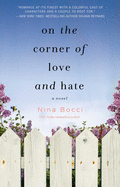
| Publisher: | Gallery Books | |
| Genre: | Women, Romantic Comedy, Romance, Workplace, Fiction | |
| ISBN: | 9781982102036 | |
| Pub Date: | August 2019 | |
| Price: | $16 |
| Fiction |
by Nina Bocci
On the Corner of Love and Hate is as charming and complicated as the small town in which Nina Bocci sets it. Cooper and Emma have been friends since childhood but their relationship took a turn in college. Since they both moved back home to Hope Lake, they've been working together at the Community Development Office, but nothing is as it used to be. They're forced to see each other every day, but they don't work together well, never mind spending time together outside of work. When Cooper decides to run for mayor to replace Emma's retiring father, matters get messier. Is Emma Cooper's old friend, contentious coworker, campaign manager or something else entirely?
Hope Lake has been reinventing itself as an outdoorsy tourist town, but all of that work is threatened when Cooper's opposing mayoral candidate proposes defunding all public projects and bringing in mega-stores. When the campaign turns ugly, Emma and Cooper are both forced to evaluate their futures in local government, in their community and in their own relationship. Long-time romance readers will be able to guess where this story is heading, but the push-pull relationship is all the more satisfying for the I-told-you-so moments.
Bocci puts her characters through an emotional wringer, but balances the pining and misunderstandings with humor and an overall uplifting message about community involvement, family and hope. --Suzanne Krohn, editor, Love in Panels
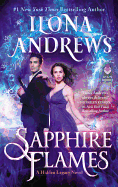
| Publisher: | Avon | |
| Genre: | Paranormal - General, Fantasy, Romance, Fiction | |
| ISBN: | 9780062878342 | |
| Pub Date: | August 2019 | |
| Price: | $7.99 |
| Science Fiction & Fantasy |
by Ilona Andrews
Urban fantasy author Ilona Andrews immerses readers in a magic-drenched Houston, Tex., with Sapphire Flames. In this, the fourth entry in the Hidden Legacy series (easily read as a stand-alone installment although readers are certain to enjoy the prior three, as well), the Baylor Investigative Agency is being led by Catalina Baylor, the Head of her House and a Prime who possesses an unusual magic that she has long attempted to conceal. When a friend's mother and sister are killed, however, Catalina can't walk away, despite warnings from other Primes. Much to her surprise, her investigation soon has her crossing paths with her teenage crush, the handsome and wealthy Alessandro Segrado. He has a carefully cultivated reputation as a jet-setting playboy, but the Alessandro who saves Catalina from attempted murder is clearly an experienced and lethal assassin. She's not convinced she can trust him, but she desperately needs his help.
Following clues to solve her friend's case leads to uncovering a conspiracy at the highest level of their world and exposes a horrifying potential for disaster. Warped biomagical research, magic-capable monsters, a murder-for-hire corporation--there seems to be no end to the dangers that loom over them. Now Catalina and Alessandro must think quickly and act even faster, for their investigation has run them afoul of people so corrupt that everyone they love is threatened. Despite the aid of a powerful friend and their best efforts, there is no guarantee they will survive. Even if they do, can there be a future for two people with prior commitments to family and their Houses?
This well-plotted story shines with an engaging cast of characters, creative world building and nail-biting action scenes that are lightened by often hilarious dialogue. Fans of urban fantasy won't want to miss this one. --Lois Faye Dyer, writer and reviewer
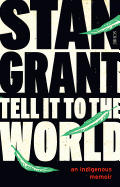
| Publisher: | Scribe Us | |
| Genre: | Biography & Autobiography, Discrimination & Racism, Personal Memoirs, Social History, Indigenous Studies, General, History, Social Science, Australia & New Zealand, Cultural, Ethnic & Regional | |
| ISBN: | 9781947534261 | |
| Pub Date: | August 2019 | |
| Price: | $15.95 |
| Social Science |
by Stan Grant
A television news and political journalist and a member of the Wiradjuri tribe of Indigenous Australians, Stan Grant offers a painfully insightful look at the tragic history of Indigenous people in Australia since the British arrived in the 18th century and started colonizing the continent.
Originally published as Talking to My Country in 2016, the book began as a response to the racist humiliation of Indigenous footballer Adam Goodes. Published in the U.S. for the first time as Tell It to the World, this is a transparent look at the full history of Australia and the historic efforts to marginalize and erase Indigenous people.
Grant's family is a microcosm of the horrors of early settlement. John Grant, a forebear, was an Irish Catholic who rose up against the English. He was convicted and sent to the penal colony, "a man in chains, hounded by tyranny, banished from the soil of Tipperary.... He died the wealthiest Irish Catholic in the colonies." As a white man he thrived, while the Indigenous, including his relations, were slaughtered at places now named for their atrocities, such as Poison Waterholes Creek and Murdering Island.
And still today in Australia, Indigenous people are disproportionately suicidal, imprisoned and "trapped by the tyranny of low expectations." In this memoir of a boy, his family and their land, Grant puts lyrical words and truth to the idea that "a truly great country... should be held to great account." --Lauren O'Brien of Malcolm Avenue Review
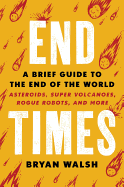
| Publisher: | Hachette Books | |
| Genre: | Nature, Biotechnology, Earth Sciences, Geology, Science, History, Physics, Earthquakes & Volcanoes, Life Sciences, Natural Disasters, Nuclear, Evolution, Global Warming & Climate Change | |
| ISBN: | 9780316449618 | |
| Pub Date: | August 2019 | |
| Price: | $29 |
| Starred | Science |
by Bryan Walsh
Predictions about the end of the world--or at least of humankind--are as old as civilization itself. But that doesn't mean the end will never happen. In End Times: A Brief Guide to the End of the World, science reporter Bryan Walsh explores all kinds of existential threats to humanity. Among them are super-volcanoes, asteroids, climate change, nuclear war, disease, biotechnology, artificial intelligence and, yes, even aliens. Some of these possibilities might sound outlandish, but Walsh draws on more than 15 years of investigative journalism at Time magazine to get the science right. He also includes interviews with scientists who study various life-ending phenomena, as well as ways to circumvent apocalypse via advanced technology and elaborate warning systems. This is a book that balances doom and gloom with hope and humor.
Walsh shows that some of these threats, like asteroids and super-volcanoes, are not without precedent. Casual readers of science may already know that an asteroid killed off the dinosaurs, but lesser known is the eruption of Toba, a super-volcano that exploded more than 74,000 years ago. As Walsh puts it, "Homo sapiens had a very bad day" when Toba blew. The amount of rock and ash spewed from the mountain, he writes, was the equivalent to 2,800 Mount St. Helens eruptions--enough to darken the skies for years and creating "hell on Earth."
Rarely is popular science writing this hair-raising. Breezily written but deeply researched, End Times thrills as much as it educates. --Amy Brady, freelance writer and editor
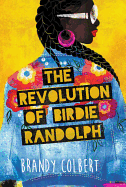
| Publisher: | Little, Brown | |
| Genre: | Dating & Sex, People & Places, Drugs, Alcohol, Substance Abuse, Family, United States - African American, Social Themes, Young Adult Fiction, Multigenerational | |
| ISBN: | 9780316448567 | |
| Pub Date: | August 2019 | |
| Price: | $17.99 |
| Starred | Children's & Young Adult |
by Brandy Colbert
Stonewall Award-winning author Brandy Colbert's (Little & Lion) fourth young adult novel, The Revolution of Birdie Randolph, introduces 16-year-old Dove "Birdie" Randolph, whose summer is upended by unexpected family revelations as she experiences her first sweet, soul-stirring love.
Dove toes the line in tune with every expectation her overprotective parents set for her: excellent grades, no partying, no boys they haven't met and approved. She's exhausted from the emotional and intellectual pressure of her high-achieving academic goals and she has no outlets now that she's given up soccer to focus on schoolwork. Her older sister Mimi's advice--"Suck it up, kick ass on the [SAT], and then the summer before your senior year is free"--is honest, but still requires that Dove's life be on hold for another year. Then best friend Laz introduces Dove to hunky Booker Stratton, a former high school football star with a "chunky Afro" and nice hands, who's spent time in a juvenile detention center. Certain she's found love but knowing her parents won't approve, Dove begins sneaking around to be with Booker. When her risky behavior catches up with her, she finds an unlikely ally in her estranged Aunt Carlene.
Superb pacing and full-bodied development of queer and ethnically diverse central and supporting characters creates a connected, tension-filled narrative. The Revolution of Birdie Randolph crescendos with an unexpected, masterful plot twist and an extremely satisfying ending. --Breanna J. McDaniel, freelance reviewer
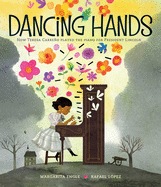
| Publisher: | Atheneum | |
| Genre: | Biography & Autobiography, People & Places, Music, History, United States - Civil War Period (1850-1877), Cultural, Ethnic & Regional, Juvenile Nonfiction, United States - Hispanic/Latino | |
| ISBN: | 9781481487405 | |
| Pub Date: | August 2019 | |
| Price: | $17.99 |
| Children's & Young Adult |
by Margarita Engle, illust. by Rafael López
"When Teresa was a little girl in Venezuela, Mamá sang lullabies while Papá showed Teresita how to let her happy hands dance across all the beautiful dark and light keys of a piano." The opening line from Dancing Hands sets both the stage and the mood for this picture-book portrait of a great but largely forgotten performer in her youthful prime.
By age six, Teresa Carreño (1853-1917) could compose music; at seven she performed at a cathedral. When she was eight, war broke out in Venezuela, so Carreño's father took the family to New York City to escape the violence and begin their lives again. But the United States wasn't a nation at peace either--the Civil War was raging. Still, Carreño and her family were safe in New York, and their apartment had a piano. Soon Carreño, who was becoming known as "the Piano Girl," was playing with orchestras and invited to perform near and far, most dauntingly and climactically for President Abraham Lincoln and his family at the White House.
Although Dancing Hands is a story of triumph, Margarita Engle doesn't gloss over the darker circumstances--historical and personal--that surrounded Carreño's artistic rise. Rafael López's digitally assembled mixed-media art is like a reflection of Carreño's emotional topography: he adapts his palette to suit her state of mind. An author's note offers a brief look at Carreño's adult life, which was distinguished by performing, composing, singing and a scandal too delicious not to report here: she returned to her native Venezuela only once because its citizens were appalled that she had married and divorced three times before she settled down with her fourth and final husband. --Nell Beram, freelance writer and YA author